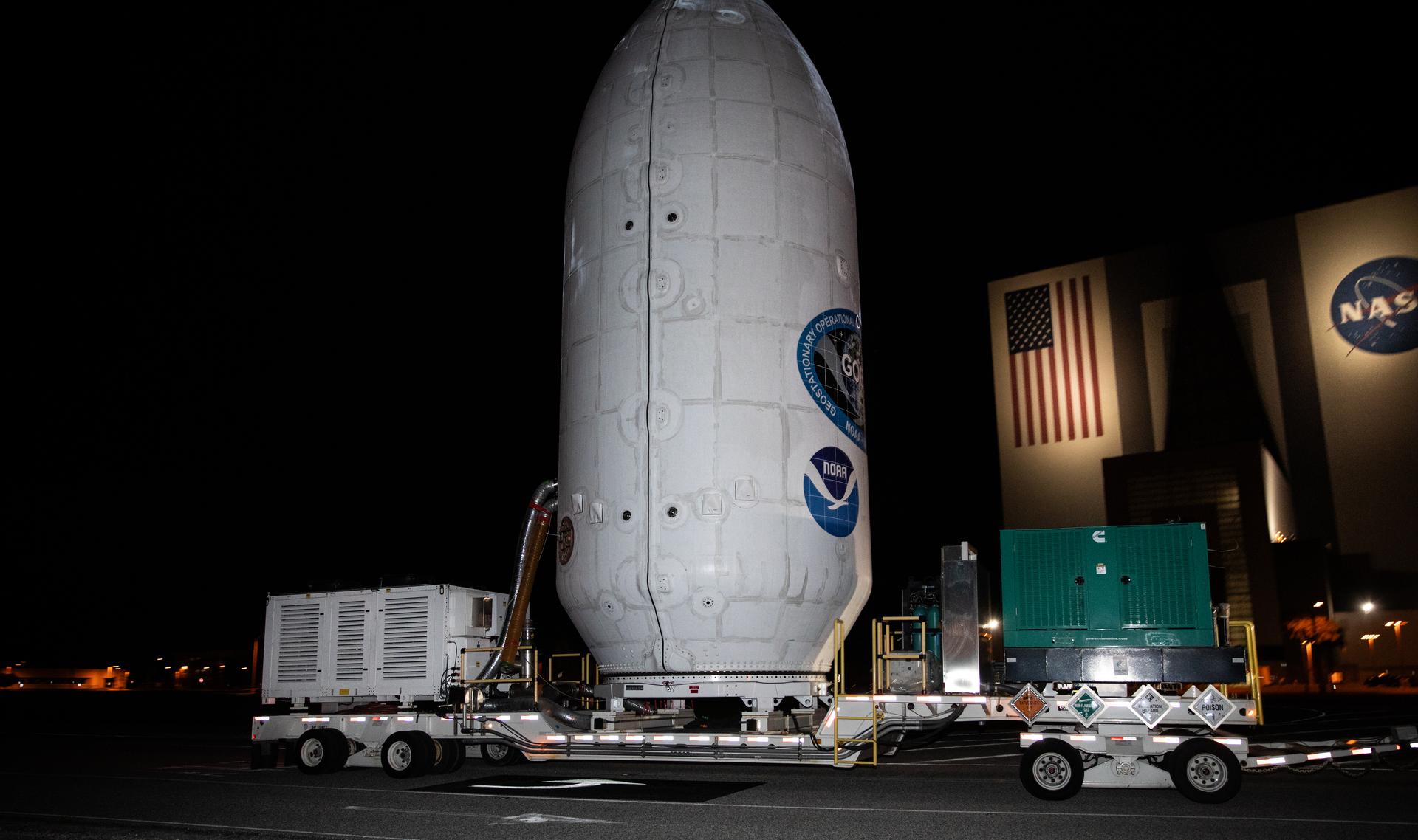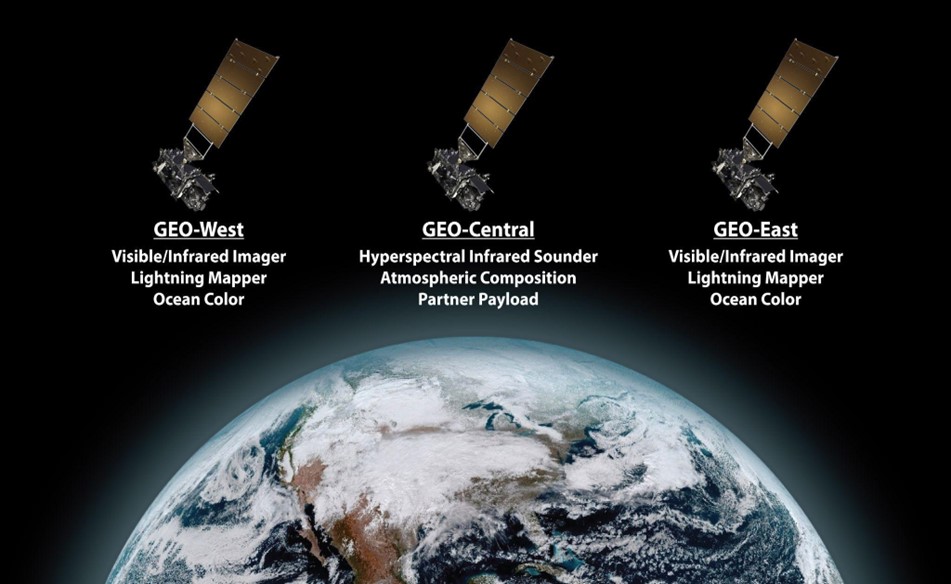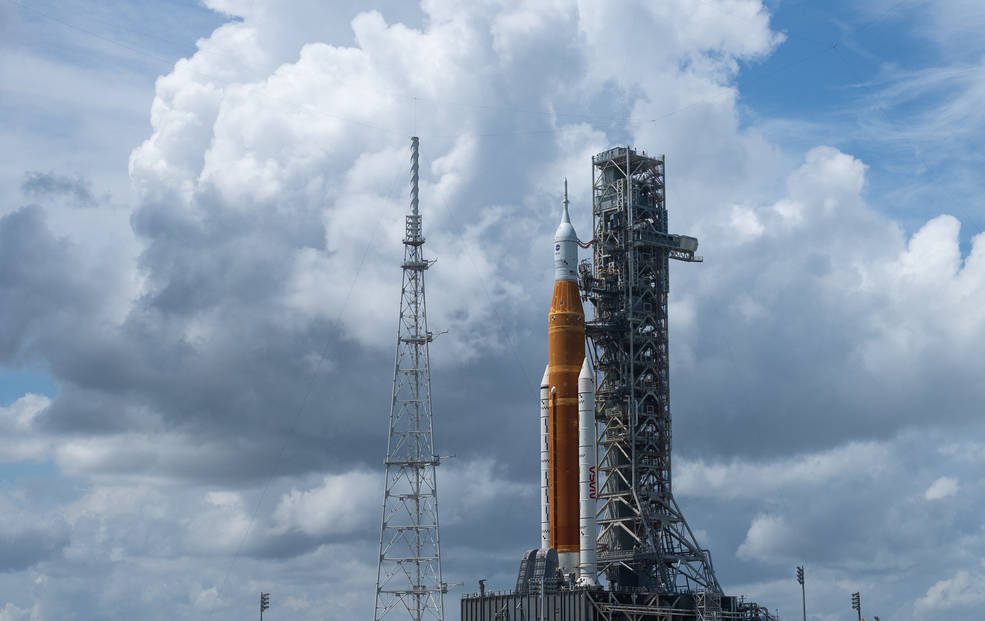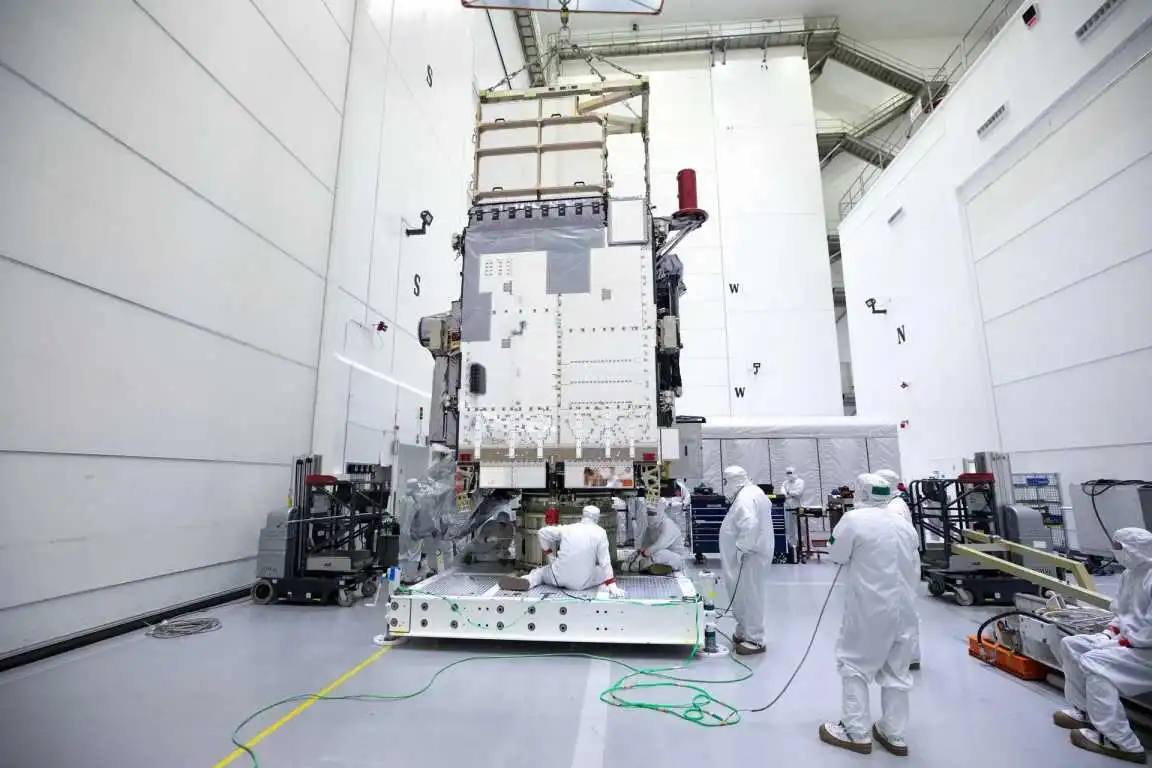NASA will give live inclusion of prelaunch and send off exercises for the Public Maritime and Climatic Organization's (NOAA) GOES-U (Geostationary Functional Natural Satellite U) mission.
The two-hour send off window opens at 5:16 p.m. EDT Tuesday, June 25, for the satellite's send off on a SpaceX Hawk Weighty rocket from Send off Complex 39A at NASA's Kennedy Space Center in Florida.
The GOES-U satellite, the last expansion to GOES-R series, will assist with planning for two sorts of climate Earth and space climate. The GOES satellites serve a basic job in giving consistent inclusion of the Western Side of the equator, remembering observing tropical frameworks for the eastern Pacific and Atlantic seas.

This nonstop observing guides researchers and forecasters in giving convenient admonitions and estimates to assist with safeguarding the one billion individuals who live and work in the Americas.
Furthermore, GOES-U conveys another minimized coronagraph that will picture the external layer of the Sun's climate to recognize and describe coronal mass discharges.
Monday, June 24
9:30 a.m. - NASA EDGE GOES-U prelaunch show on NASA+, the NASA application, and the organization's site.
11 a.m. – GOES-U science briefing with the following participants:
Charles Webb, delegate chief, Joint Organization Satellite Division, NASA || Ken Graham, chief, NOAA's Public Weather conditions Administration || Dan Lindsey, boss researcher, GOES-R Program, NOAA ||
Elsayed Talaat, chief, NOAA's Office of Room Climate Perceptions || Chris Wood, NOAA Typhoon Tracker pilot || Inclusion of the science news gathering will stream live on NASA+, the NASA application, YouTube, and the office's site.

Media might pose inquiries face to face and by means of telephone. Restricted assembly hall space will be accessible for in-person support. For the dial-in number and password, media ought to contact the Kennedy newsroom no later than one hour before the beginning of the occasion at ksc.
3:15 p.m. – NASA Social panel at Kennedy with the following participants:
Jade Zsiros, telemetry engineer, NASA's Send off Administrations Program || Ellen Ramirez, agent division boss, Mission Activities Division, Public Ecological Satellite, Information, and Data Administration Office of Satellite and Item Tasks, NOAA || Dakota Smith, satellite expert and communicator, NOAA's Helpful Organization for Exploration in the Air.
Allana Nepomuceno, ranking director, GOES-U Get together, Test, and Send off Tasks, Lockheed Martin || Chris Reith, program chief, High level Pattern Imager, L3Harris Advancements.

The board will transfer live on NASA Kennedy's YouTube, X and Facebook accounts. Individuals from the general population might pose inquiries online by presenting on the YouTube, X, and Facebook live transfers or utilizing #AskNASA.
5 p.m. - Prelaunch news meeting at Kennedy (following finishing of the Send off Status Survey), with the accompanying members:
Denton Gibson, send off chief, Send off Administrations Program, NASA || Steve Volz, associate manager, NOAA's Satellite and Data Administration || Pam Sullivan, chief, GOES-R Program, NOAA || John Gagosian, chief, Joint Organization Satellite Division || Julianna Scheiman, chief, NASA Science Missions, SpaceX || Brian Cizek, send off weather conditions official, 45th Climate Group, U.S. Space Power.
Audio Only Coverage
Sound just of the news gatherings and send off inclusion will be carried on the NASA "V" circuits, which might be gotten to by dialing 321-867-1220, - 1240 or - 7135. On send off day, "mission sound," commencement exercises without NASA TV media send off discourse, will be carried on 321-867-7135.
Live Video Coverage Prior to Launch
NASA will give a live video channel of Send off Complex 39A roughly 24 hours before the arranged takeoff of the mission on NASA Kennedy's YouTube: https://youtube.com/kscnewsroom. The feed will be continuous until the prelaunch communicated starts on NASA TV media channel.
NASA Website Launch Coverage
Send off day inclusion of the mission will be accessible on the organization's site. Inclusion will incorporate live streaming and blog refreshes starting no sooner than 3 p.m., June 25, as the commencement achievements happen.

On-request web based video and photographs of the send off will be accessible soon after takeoff. For inquiries regarding commencement inclusion, contact the Kennedy newsroom at 321-867-2468. Follow commencement inclusion on the GOES blog.
Attend the Launch Virtually
Individuals from general society can enroll to essentially go to this send off. NASA's virtual visitor program for this mission likewise incorporates organized send off assets, notices about related open doors or changes, and a stamp for the NASA virtual visitor identification following send off.
Watch, Engage on Social Media
Tell individuals you're following the mission on X, Facebook, and Instagram by utilizing the hashtags #ReadyToGOES and #NASASocial. You can likewise remain associated by following and labeling these records:
Frequently Asked Questions!
Does NASA work with NOAA?
NOAA and NASA regulate the turn of events, send off, testing, and activity of the relative multitude of satellites in the GeoXO program. NOAA reserves and deals with the program, activities, and information items. For NOAA, NASA and business accomplices create and construct the instruments and shuttle and send off the satellites.
How much do NOAA satellites cost?
GeoXO is NOAA's biggest satellite program ever, with an expected all out lifecycle cost of $19.6 billion. That covers advancement of six satellites and their tasks through the center of the hundred years. NOAA got $301 million for the progressing GOES-R series of geostationary weather conditions satellites.
Where does NOAA get its data?
NOAA satellites notice the Earth from space, continually filtering the planet to gather the most exceptional information about the air, land, and seas. This data is essential to our day to day routines and is as a matter of fact the reason for each weather conditions estimate.

